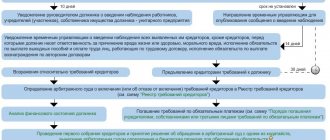Special or free economic zone - what is it and what prospects does it open to states, citizens and businesses? The creation of such territories helps to achieve solutions to complex issues of global economic scale and brings the future closer. We tell you what characterizes free economic zones (FEZs or SEZs), what types they exist, why governments of different states give certain territories a privileged status, what are the benefits of business, and also suggest that you familiarize yourself with the operating SEZs in Russia.
Purposes of creation
The creation of a SEZ makes it possible to achieve several goals at once for both the state and investors. A special territory can solve one or several foreign trade, economic, social, scientific and technical problems.
Thus, the creation of a SEZ gives the state:
- attracting capital, resources, new technologies and highly qualified specialists;
- new workplaces;
- increase in export volumes;
- increasing the production of domestic goods and curbing the volume of export products.
In addition, such zones are often used to test new models of economics and management .
From investing their own capital in the development of the SEZ, investors receive:
- new sales market;
- production of goods directly within the sales market, which means the opportunity to save on customs duties;
- access to government infrastructure;
- a number of preferential tax and legal preferences.
In 2020, there are about 1,200 such territories in the world. Their creation is beneficial to both parties. Plus, unemployment is practically eradicated in the region and infrastructure is being developed.
"Altai Valley"
SEZ TRT “Altai Valley” is a tourist and recreational area. It was created in February 2007 on the basis of Russian Government Decree No. 67. The privileged position is provided for 49 years.
This zone is located 12 km from the city of Gorno-Altaisk, the center of the Altai Republic. About 2.5 thousand people are provided with new jobs here. The territory offers unique opportunities for its residents. Cooperation is built on the principles of public and private partnership. This means that the creation of all necessary infrastructure is financed from budget funds, and the creation of tourist facilities is a share of private investment.
The state guarantees significant administrative advantages:
- non-interference in the implementation of investment projects;
- simplified inspection format;
- “single window” mode;
- registration of leases for land plots with a regulated legal status.
Investors can also enjoy tax benefits:
- 0% - property tax rate, as well as land tax for 5 years;
- rental fee for land plots - no more than 2% of their cadastral value;
- lowering the transport tax rate;
- reduction of income tax to 15.5%.
Zone classification
When creating an economic zone, the state initially sets certain goals, so the SEZ has some classification, depending on the given development vector. Currently the zones are classified as follows:
- Trading . The most common SEZs. This includes seaports, airports, warehouses. Trading activities can be carried out on their territory, but only in bulk. A striking example of a micro-trade zone can be called duty-free stores, in which not a single law of the country’s customs area applies;
- Industrial . They are created with the aim of increasing the competitiveness of goods produced within the country. For their creation, territories close to resource bases and transport routes are allocated.
- Technological . For development, the state creates technological zones, attracting highly qualified specialists in every possible way with favorable conditions and a budget for scientific programs.
- Tourist . There are many undeveloped resort and picturesque regions in the Russian Federation. In order to develop them, the state creates favorable conditions for running small and medium-sized businesses, creates infrastructure and attracts investors.
Zones are also divided according to the degree of organization into territorial, functional and mixed. In territorial ones, benefits are provided for all types of business activities; in functional ones, only certain types of activities have preferences for investment. Mixed people show signs of both.
Customs regime of a free customs zone: regulatory framework
Within the state borders of Russia, Armenia, Belarus, Kazakhstan and Kyrgyzstan, the common Labor Code of the EurAsEC CU operates. The issue under consideration is also regulated by the “Agreement on free (special, special) economic zones on the customs territory of the Customs Union and the customs procedure of the Free Trade Zone.” The concept of SEZ is identical to the term SEZ previously adopted in the Russian Federation. However, the existence of the latter could not be extended.
Benefits in the SEZ
As already noted, investors and businessmen are entitled to benefits and privileges. In fact, the benefits vary in each specific zone, but some basic points are found in most of them.
When obtaining resident status, you can count on:
- duty-free import of equipment and spare parts for production;
- reduction or complete absence of tax rates in the first years of activity;
- removal of restrictions on ownership of production assets (for foreign investors);
- low standards for workplace organization and payroll;
- minimum prices for the purchase or rental of infrastructure facilities;
- subsidies for the use of natural resources and utility bills;
- low standards of environmental safety and labor protection;
- lack of trade unions;
- free access to the domestic and foreign markets;
- expedited obtaining of necessary permits.
This is not the entire list of preferences, but even this small part gives a huge impetus to the development of the region’s economy.
Difficult moments in the Russian Federation
In addition, there are a number of internal problems in Russia that hinder the successful functioning of free customs zones for the benefit of the country. The most important among them are the following:
- The Russian Federation has not yet created comfortable working conditions for foreign specialists.
- High level of risk when investing.
- Much longer payback periods for projects compared to developed countries.
- Insufficient guarantees of return on investment.
- The problem of processing products that are export-oriented.
- Ineffective transport links with remote regions, which makes the latter's products uncompetitive.
- Demographic problems.
Procedure for registering residents
To work on preferential terms, you need resident status . It may take from 3 to 6 months to receive it, depending on the intended project.
The registration procedure can be divided into 5 stages :
- Submitting an application for participation in the regional economy to the Ministry of Economic Development of the Russian Federation. Usually it is reviewed within 2-3 months.
- Passing the state examination and, in case of a positive decision, collecting documents and drawing up an agreement.
- Coordination of organizational and land issues. This stage also takes about a month.
- Drawing up a lease agreement for a plot of land where the future resident will conduct his business.
- Closing the financial issue.
At the same time, a number of requirements are presented to candidates - the absence of a minimum limit on the volume of investments, the presence of the status of a commercial organization or individual entrepreneur, the absence of branches outside the SEZ and registration in the region where the economic zone is located.
The resident must also develop a detailed business plan, provide copies of the registration certificate, tax registration document and copies of the company’s constituent documents.
Integration and enclave SEZs
Traditionally, SEZs are divided into two categories according to the parameter of involvement in the Russian economy:
- closed (enclave);
- integration.
Closed areas usually include territories that are isolated, including geographically (islands, enclaves, etc.). However, there are cases when such zones are created inside large cities. Everything produced in them is not sent to the domestic market, but is exported abroad.
SEZs of the integration type necessarily have various connections with the national economy of the Russian Federation (however, connections with the economies of other states are not excluded).
Working in a special economic zone
dozens of economic zones on the territory of the Russian Federation . They are mainly concentrated in manufacturing and heavy industry. Thanks to generous government funding, salaries in the SEZ are higher than the national average. Therefore, most specialists strive to work there.
Alabuga
25 km. from Naberezhnye Chelny is the largest economic zone in Russia , where it is located. Over the past year, more than half of the revenue comes from Alabuga.
In fact, Alabuga is one continuous plant stretching over an area of more than 3,000 hectares. More than 60 resident companies operate here, most of which are foreigners.
Alabuga is constantly in need of highly qualified engineers and mechanics. There is also a high demand for experienced managers and managers. Because of this, its own educational institution for training personnel has even been established on its territory.
Dubna
Dubna is the result of borrowing the experience of the USA and South Korea. Located in the Moscow region, the SEZ is an analogue of the American Silicon Valley . This is a real scientific complex where communication technologies are developed and work is carried out in the field of biomedicine, nuclear and nanophysics.
The government is actively funding this zone. Over the past few years, more than 8 trillion rubles have been invested in Dubna. Given the specifics of the activity, Dubna is constantly looking for young and promising specialists who want to develop in the scientific community.
Altai Valley
Where else but in Altai to develop tourist and health destinations. On the territory of the Altai Valley there are several health centers and ski resorts, and the sphere of extreme tourism is actively developing.
After investments of foreign and national capital totaling more than 20 billion rubles, in 2013 the SEZ began to receive its first tourists. The flow of visitors is growing every year.
Turquoise Katun
An equally significant contribution to the development of the Altai region is made by Turyuzovaya Katun. This zone also specializes in the development of tourism and health resorts. Today, the volume of investments in the SEZ has exceeded 30 billion rubles.
Turquoise Katun is located along the river of the same name. People come here for the Tavdinsky caves, health treatments and kayaking on the river.
As in the Altai Valley, Turyuzovaya Katun is constantly in need of experienced instructors, service personnel and medical specialists.
Titan Valley
Titanium Valley is a strategically important territory for the country, so funding is provided exclusively by government funds . Russia ranks first in the world in the export of titanium mined in the Titanium Valley.
The valley is located in the Sverdlovsk region. Every year, mining engineers, geologists, drivers and researchers are required here.
Ulyanovsk
Ulyanovsk is the center of aviation design in Russia . Initially, even under the USSR, on its territory there was an ordinary Ulyanovsk-Vostochny airport, which over time became the site of design bureaus, workshops, and full-fledged factories.
Now the Ulyanovsk SEZ is represented by a large complex engaged in aircraft, machine, instrument making, and the creation of new composite materials. At international exhibitions, Ulyanovsk developments take first places. To work in Ulyanovsk, specialists are trained in higher educational institutions throughout Russia.
Classification of SEZs by functional purpose
It is also possible to divide the Russian SEZ according to the parameters of the functions performed. Various experts here offer their own classification options. The official body, the Ministry of Economic Development of the Russian Federation, distinguishes only four categories:
- Tourist and recreational . These are the areas of the country where it is important to work on the development of a tourist destination. That is, in these areas there are recreational opportunities, historical attractions, and places of cultural significance.
- Technical and implementation . These zones are created for laboratories engaged in scientific research, design bureaus, technopolises, technology parks and other similar objects. The main goals of such SEZs are the development of innovative technologies and projects, the promotion of scientific and technological progress, and the development of new solutions and products. Comfortable conditions are also specially created here, which may be attractive to foreign highly qualified specialists.
- Port . As a rule, they are located on the territory of sea or river ports, in close proximity to global transit routes. This category also includes free trade zones that are exempt from duties. It creates good preconditions for types of business related to the delivery, unloading, loading, sorting and warehousing of various types of cargo.
- Industrial and production. Specific formats and areas of production are being developed in these SEZs. Investors who invest in these areas are provided with significant benefits and incentives.
There are also complex SEZs that perform several of the listed functions at once. Moreover, entire regions of the country can receive this status, for example, in the case when there is a need to provide benefits to all or almost all entrepreneurs for the development of their economy.
Running a small business in the SEZ
It is not for nothing that the SEZ is called an incubator for small and medium-sized businesses . Outside the SEZ, small businesses are faced with paying many taxes and fees, government service audits, and more. The free economic zone does not have all this. On the contrary, the administration contributes in every possible way to business development, providing information support, expert advice and tax exemptions in the first few years of activity.
You can find out how SEZs are structured in Russia in the video below.
List of SEZs in Russia
Now in Russia there are more than two dozen operating technology parks, industries, resorts and ports.
Industrial-production, PPT:
- "Lipetsk";
- "Kaluga"
- "Moglino";
- "Alabuga";
- "Nodal";
- "Tolyatti";
- "Titanium Valley";
- "Lotus".
Technical and implementation, TVT:
- "Technopolis Moscow";
- "Source";
- "Innopolis"
- "Saint Petersburg";
- "Dubna";
- "Tomsk".
Tourist and recreational, TRT:
- "Zavidovo";
- "Turquoise Katun";
- "Gate of Baikal";
- "Baikal Harbor";
- "Resorts of the North Caucasus".
Other:
- TASED "Khabarovsk";
- PT "Murmansk";
- PT "Sovetskaya Gavan";
- "Stupino Square"
A SEZ has also been formally created in Crimea since 2014. Interestingly, it appeared twice: in Russia (which included the territory as a result of a referendum) and in Ukraine (which considers the peninsula annexed). On the Russian side, investors are provided with preferential taxation for the next 25 years; on the Ukrainian side, there will be no national taxes and fees. The difficult political situation interferes with the normal development of the peninsula, repels investors and actually makes the SEZ status useless. Large businesses, domestic and foreign, do not risk investing in the disputed territory, not wanting to be subject to sanctions by the international community.








